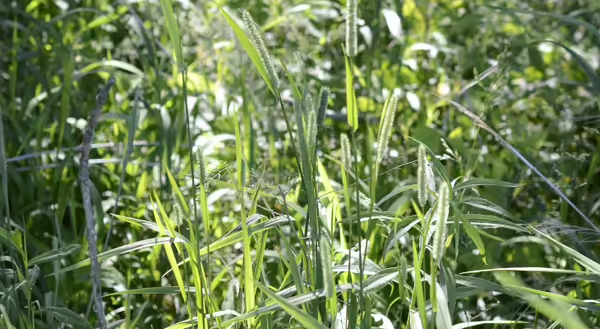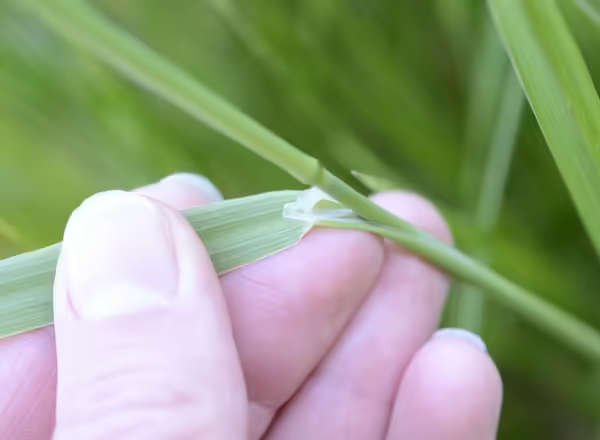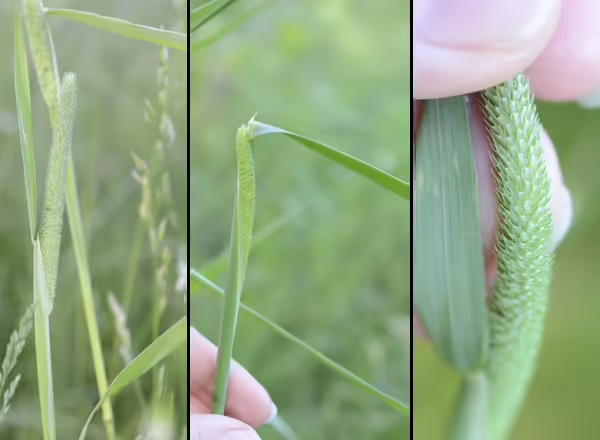
When I was a kid, we had guinea pigs as pets, Hershey, Graham, and Tristan. One regular part of their diet was hay. Each pig absolutely loved eating the fluffy little grass pieces included in the hay – it turns out those favorite pieces were Timothy.
Timothy, Phleum pratense, is a popular pasture grass and widely used as a food source for animals.
This grass was introduced to the United States and it can escape from cultivation and show up in disturbed areas or remain in old fields. Timothy is a cool-season grass, greening up in the spring and flowering before the heat of the summer sets in.

Gray-green leaves
I don’t often talk about different shades of green when describing plants, but the foliage of Timothy has a gray-green appearance that can make it stand out from other brighter green grasses. It produces broad leaves that taper to a point. Timothy has a tall, membranous ligule.

Timothy flowers arranged in a spike
Timothy produces a spike inflorescence, and often, but not always, the spike seems to emerge right out of the collar region of the uppermost leaf on the plant. This can make the spike look like it is bursting out of the leaf sheath. The spike is usually 3- 5 inches long, and densely packed with small spikelets. Taking a closer look, the individual spikelets each have two short awns on them, making them look like they have horns.
Never miss a new post! Sign up for our email list.
ABOUT THE AUTHOR: Erin Garrett is a Natural Resources, Environment, and Energy Educator for University of Illinois Extension serving Alexander, Johnson, Massac, Pulaski, and Union counties. Erin develops and delivers high impact programming to adults and youth to help them develop an appreciation for natural resources and to empower them to make small changes to positively impact the environment. Erin’s programming focuses on why homeowners should consider choosing native plants, how to support native pollinators, how to identify grasses, how to identify and manage invasive species, and developing an appreciation for prairie ecosystems.
ABOUT THE BLOG: Grasses at a Glance dives into grass identification, focusing on tips and tricks that make grass identification possible. Get information about native and non-native species, how to tell look-alikes apart, and which grasses you can find in Illinois.
Want to see Timothy identified in the field?
Timothy, Phleum pratense, is a non-native, cool season grass found in every county in Illinois. Used as a forage grass, it prefers growing in fields and other disturbed habitats. It grows two to four feet tall and its foliage has a gray to blue-green appearance. Its leaves are broad and...